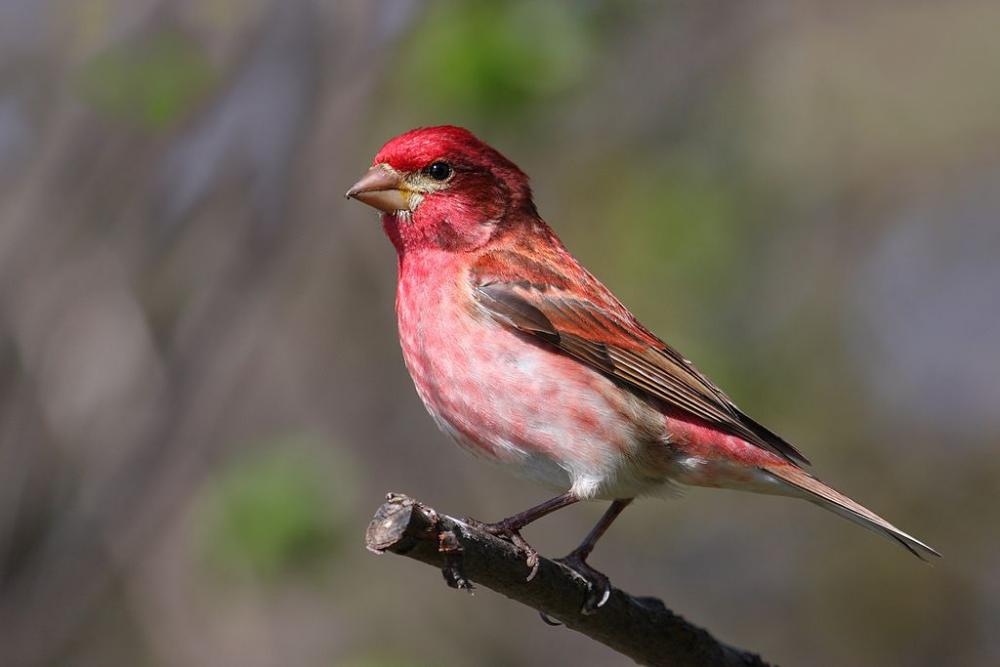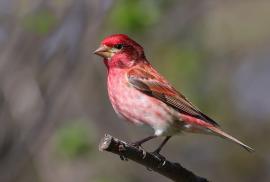Guide to Boreal Birds
Overview
Purple Finches are numerous and conspicuous during spring migration; pairs are territorial, the brightly colored male displaying in front of the female with his rich, spirited, warbling song. After the clutch is raised, they may be seen in large flocks visiting orchards, parks, and other woodlands. In winter they visit feeding stations in large numbers, showing a fondness for sunflower seeds. The Purple Finch is also the state bird of New Hampshire.
Description
5 1/2-6 1/2" (14-17 cm). Larger and stockier than House Finch, but smaller than Cassin's and darker than both. Dusky rose-red of male, more raspberry than purple, extends from upperparts to breast and flanks, brightest at crown and rump. Off-white below, mantle streaked with brown, wings and notched tail brown. Female has pronounced light stripe behind eye, dark stripe on jaw, and more heavily streaked breast than female House or Cassin's Finches.
Voice
Rich musical warble. Call a distinctive tick in flight.
Nesting
4 or 5 blue-green eggs, spotted at the larger end with dark brown, in a well-made cup of grasses and twigs, often lined with hair, placed in a conifer.
Habitat
Mixed and coniferous woodlands; ornamental conifers in gardens.
Range/Migration
Breeds from British Columbia east to Newfoundland, southward in western mountains to California and from eastern Minnesota east to West Virginia. Winters south to U.S.-Mexico border.



